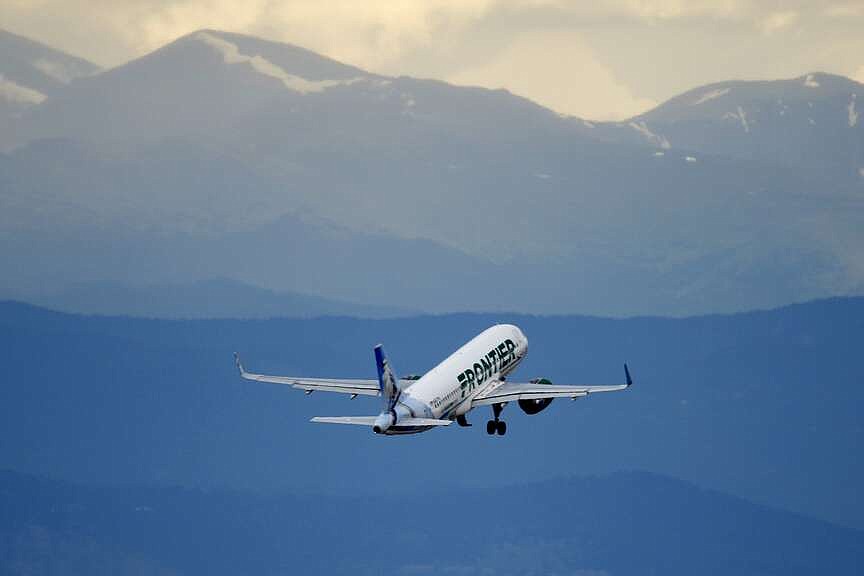DALLAS — Delta and United have become the most profitable U.S. airlines by targeting premium customers while also winning back a significant share of travelers on a tight budget.
That is squeezing smaller low-fare carriers like Spirit Airlines, which filed for bankruptcy protection on Monday. Some travel-industry experts think Spirit’s troubles indicate that travelers on a budget will be left with fewer choices and higher prices.
Other discount airlines are on much better financial footing than Spirit, but they too are lagging far behind the full-service airlines when it comes to recovering from the covid-19 pandemic. Most industry experts think Frontier Airlines and other so-called ultra-low-cost carriers will fill the vacuum if Spirit shrinks, and that there is still plenty of competition to prevent prices from spiking.
Spirit Airlines has lost more than $2.2 billion since the start of 2020. Frontier has not reported a full-year profit since 2019, although that slump might end this year. And Allegiant Air’s parent company is still profitable, but less so than before the pandemic.
Those kind of numbers — and of course, some promotion of his own airline — led United Airlines Chief Executive Officer Scott Kirby to declare recently that low-cost carriers were using “a fundamentally flawed business model” and customers hate flying on them.
Kirby’s touchdown dance might turn out to be premature, but many analysts are wary about the near-term prospects for budget airlines, which charge cheaper fares but more fees than the big airlines.
What is ailing low-cost airlines?
Low-cost airlines grew in the last two decades by undercutting big carriers on ticket prices, thanks in large part to lower costs, including hiring younger workers who were paid less than their counterparts at Delta Air Lines, United and American Airlines.
Wages have soared across the industry in the last two years, however, narrowing that cost advantage.
At the same time, the big airlines rolled out and refined their no-frills, “basic economy” tickets to compete directly with Spirit, Frontier and other budget carriers for the most price-sensitive travelers.
The budget airlines have also become less efficient at using planes and people.
As their growth slowed, they wound up with more of both than they needed.
In 2019, Spirit planes were in the air an average of 12.3 hours every day.
By this summer, the planes spent an average of two more hours each day sitting on the ground, where they don’t make money.
Spirit’s costs per mile jumped 32% between 2019 and 2023.
Another issue is that airlines added too many flights. Budget airlines and Southwest Airlines were among the worst offenders, but full-service airlines piled on. To make up for a drop in business travel, the big carriers added more flights on domestic leisure routes.
The result: Too many seats on flights into popular tourist destinations such as Florida and Las Vegas, which drove down prices, especially for economy-class tickets.
Tom Fitzgerald, an airline analyst at TD Cowen, said that after doing a good job tweaking their basic-economy offerings, the bigger airlines now are enjoying a boom on the premium travel side.
“Post-covid, people have seemingly been willing to pay a lot more to have a better experience” with flights and lodging, he said, “and the legacy carriers are a lot better positioned to cater to that demand. They have premium economy, they have first-class.”
Low-cost airlines are responding by following the old adage that if you can’t beat them, join them. That means going premium, following the rapidly growing household wealth among upper-income people.
Frontier Airlines organized its fares into four bundles in May, with buyers of higher-priced tickets getting extras such as priority boarding, more legroom and checked bags. The airline dropped ticket-change or cancellation fees except for the cheapest bundle.
Spirit followed in August with similar changes, blocking middle seats and charging passengers more for the comfort of aisle and window seats.
JetBlue Airways, which began flying more than 20 years ago as a low-cost carrier but with amenities, is digging out from years of steady losses. Under new CEO Joanna Geraghty, the first woman to lead a major U.S. airline, JetBlue is cutting unprofitable routes, bolstering core markets that include the Northeast and Florida, and delaying deliveries of $3 billion worth of new planes.
Perhaps the biggest change is coming at Southwest Airlines. Starting next year, Southwest will toss out a half-century tradition of “open seating” — passengers picking their own seat after boarding the plane. Executives say extensive surveying showed that 80% of customers preferred an assigned seat, and that’s especially true with coveted business travelers.
Coming out of the pandemic, “there is a clear preference for more premium,” Southwest CEO Robert Jordan said. “Premium is kind of self-defined — whether that is extra legroom, first-class to Europe, whatever it is — but there is a rise in the desire for premium, something a little better.”

